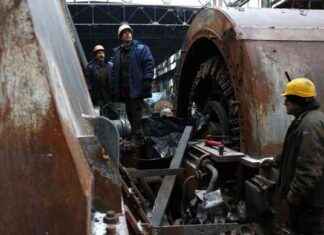by the end of the century will be a lot of glacier history. When the ice recedes, new, untouched landscapes. You should place them under protection? Or could there arise new reservoirs required urgently-fossil energy supply?
contributes To this debate, a research team at the ETH Zürich and the research Institute for forest, snow and landscape (WSL) will now have to Pay. The Team of Daniel Nine calculated the global storage and water power potential reservoirs in weggeschmolzenen glaciers.
The glaciologists used a global glacier inventory and focused on glaciers areas by the climate change until the end of the century more or less free of ice. There, they placed a virtual dam today, on the end of each glacier. They chose the locations so that not only the economic output was greatest, but also the negative impact on the landscape as low as possible was, like the ETH and WSL is held in a joint communication.
13-percent more water force
For the selected 185’000 locations, the researchers calculated a maximum theoretical hydro potential of 1350 terawatt hours per year – about a third of today’s global hydropower production. According to an additional suitability test of the sites, this value was reduced to a more conservative estimate of 533 terawatt hours per year: This means that today’s energy production from hydropower will increase by 13 per cent could be.
The reservoirs would not, however, serve only the electricity production but also the diminishing function of the glaciers as a water reservoir, at least partially, compensate. If without the glaciers, the rivers in the summer months, less water, in many regions of the world far-reaching consequences for water supply and agriculture. Reservoirs could help remedy this situation. The storage and hydro-power potential in some countries is greater than in others, and stressed Nine in an interview with the news Agency Keystone-SDA. In Tajikistan, for example, such a new dam could be lakes, around 80 percent of current electricity demand, in Chile, 40 percent, and in Pakistan, 35 per cent. For Switzerland, the Team calculated a potential of 10 per cent.
energy versus protection of the landscape
“We don’t want a gold rush, force potential, formed by melting glaciers,” says Nine generate, given the new Water. The study should only provide facts, to use no scoring, if it was good or bad, ice-free glacier areas for reservoirs.
“We as glaciologists would prefer that the glacier still exist for a long time. But we want to take with this study, a different angle on the melting of the glaciers as water scarcity and rising sea levels.” Climate change will leave new landscapes, and thus the question of what should happen to arise.
climate change is currently one of the social focus. In order to reduce CO2 emissions and to protect the climate , is the move away from fossil fuels is inevitable. Hydropower could make a contribution. “Whether it’s electricity from this renewable source, or intact landscapes are important, is a discussion that must lead the company,” said Nine. At the Federal level, the energy supply is considered to be of national interest and is therefore weighted the same as the protection of the landscape. (step/sda)
Created: 13.11.2019, 15:27 PM






